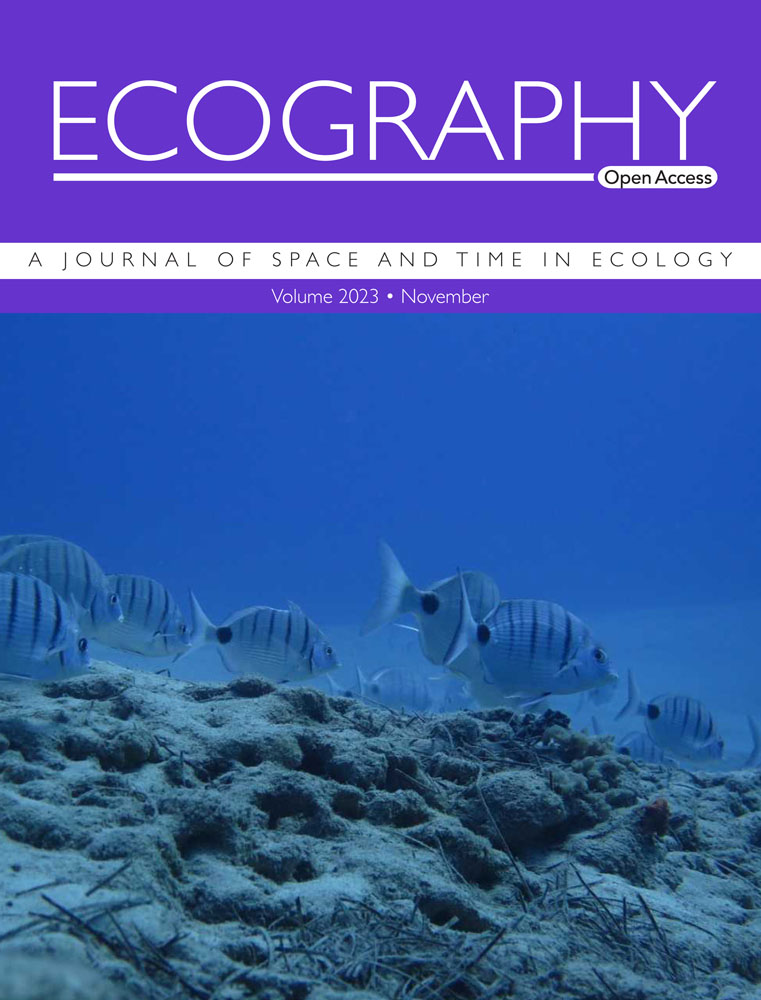Lineage‐specific phylogenetic structure of boreal habitats suggests different assembly processes across phylogenetic and spatial scales
IF 4.7
1区 环境科学与生态学
Q1 BIODIVERSITY CONSERVATION
引用次数: 0
Abstract
The phylogenetic distance among species in a community (community phylogenetic structure) has been used to infer deterministic and stochastic assembly processes, albeit with criticisms. The effect of phylogenetic scale (old versus young lineages) and spatial scale on measures of CPS are rarely tested simultaneously, especially in the boreal biome, yet are essential to unravel different assembly processes that might operate in a community. We examined lineage‐specific phylogenetic structure for six vascular plant communities defined at the habitat scale (Arctic‐alpine barren, bog, fen, Kalmia barren, limestone barren, and serpentine barren) on the island of Newfoundland, Canada, and the phylogenetic structure of plant communities defined at a plot scale (72 plots × 1 m北方生境的谱系特异性系统发育结构表明不同的系统发育和空间尺度的组合过程
群落中物种之间的系统发育距离(群落系统发育结构)已被用于推断确定性和随机组装过程,尽管存在批评。系统发育尺度(年老谱系与年轻谱系)和空间尺度对CPS测量的影响很少同时进行测试,特别是在北方生物群系中,但对于揭示可能在群落中运行的不同组装过程至关重要。我们研究了加拿大纽芬兰岛上六个维管植物群落的谱系特异性系统发育结构(栖息地尺度为北极高寒贫瘠、沼泽、沼泽、卡尔米亚贫瘠、石灰岩贫瘠和蛇形贫瘠),以及地块尺度(72个地块× 1 m2)的植物群落系统发育结构。与逆境环境中系统发育聚类的应激优势假说的预期相反,6个北方生境中的大多数枝系具有随机的系统发育结构。然而,我们观察到被子植物从最深节点的系统发育聚集到较浅节点的无系统发育结构的转变(<; 110亿年前),这表明栖息地内系统发育规模的组装过程发生了变化,以及深节点确定性过程的潜在作用。1 m2样地的随机系统发育结构和我们为测试环境应力梯度对群落组成的影响所做的建模工作表明,在这个精细的空间尺度上,物种聚集是由一系列复杂的随机和确定性因素造成的,而不仅仅是压力优势假说所预测的蛇纹等恶劣环境中的非生物过滤。当考虑物种丰度或当多组性被解决时,系统发育结构指标的解释没有改变。综上所述,装配过程的推断必须是谱系、栖息地和空间尺度特定的,并辅以性状作用和进化方面的知识,我们概述了未来的研究假设。
本文章由计算机程序翻译,如有差异,请以英文原文为准。
求助全文
约1分钟内获得全文
求助全文
来源期刊

Ecography
环境科学-生态学
CiteScore
11.60
自引率
3.40%
发文量
122
审稿时长
8-16 weeks
期刊介绍:
ECOGRAPHY publishes exciting, novel, and important articles that significantly advance understanding of ecological or biodiversity patterns in space or time. Papers focusing on conservation or restoration are welcomed, provided they are anchored in ecological theory and convey a general message that goes beyond a single case study. We encourage papers that seek advancing the field through the development and testing of theory or methodology, or by proposing new tools for analysis or interpretation of ecological phenomena. Manuscripts are expected to address general principles in ecology, though they may do so using a specific model system if they adequately frame the problem relative to a generalized ecological question or problem.
Purely descriptive papers are considered only if breaking new ground and/or describing patterns seldom explored. Studies focused on a single species or single location are generally discouraged unless they make a significant contribution to advancing general theory or understanding of biodiversity patterns and processes. Manuscripts merely confirming or marginally extending results of previous work are unlikely to be considered in Ecography.
Papers are judged by virtue of their originality, appeal to general interest, and their contribution to new developments in studies of spatial and temporal ecological patterns. There are no biases with regard to taxon, biome, or biogeographical area.
 求助内容:
求助内容: 应助结果提醒方式:
应助结果提醒方式:


